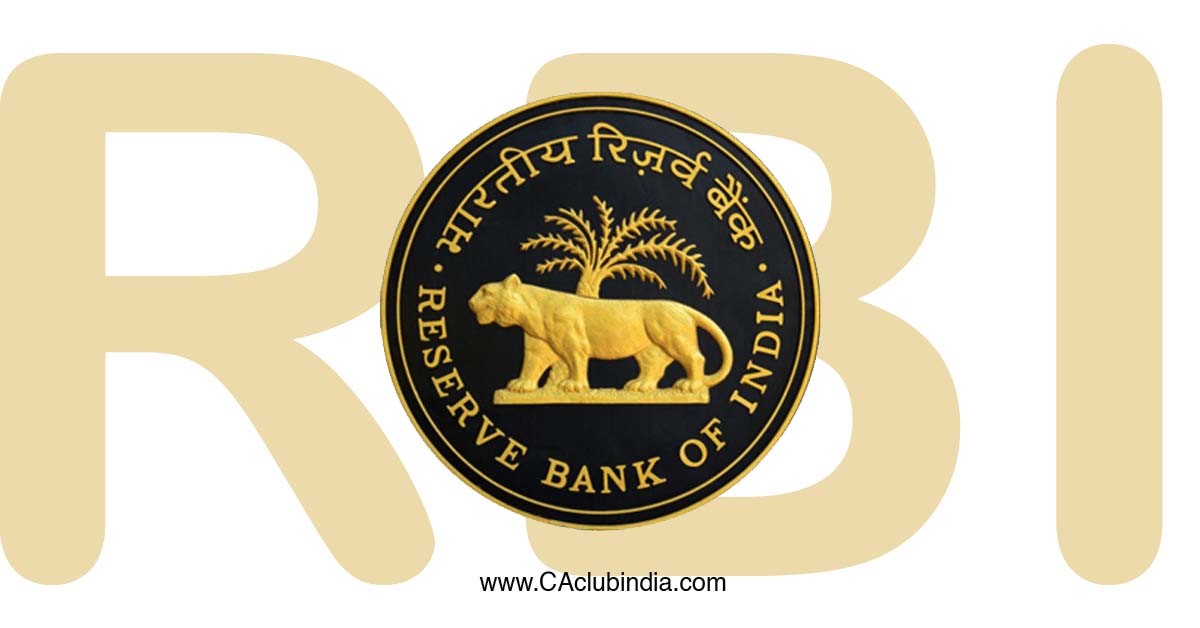Introduction
The recent RBI directive halting all disbursements from the New India Co-operative Bank has once again brought the frailty of cooperative banks into the spotlight. Despite repeated attempts at regulatory oversight, these institutions continue to be hotbeds for financial mismanagement, fraud, and liquidity crises. A deep dive into RBI's annual report reveals a staggering statistic: cooperative banks account for the highest number of penalties among financial institutions. I find myself compelled to ask the uncomfortable questions: are cooperative banks inherently flawed, and can the government ever truly reform them? Why do cooperative banks, designed to be the financial lifeline of local communities, repeatedly fall prey to systemic fraud and mismanagement? And why do depositors continue to trust these institutions despite the availability of far more robust private and public sector banks in the same vicinity?

The Cooperative Banking Saga
Cooperative banks in India were originally established with the noble intent of providing financial inclusion to rural and semi-urban populations. However, over the years, they have become plagued by governance issues, political interference, and weak financial oversight. Unlike commercial banks, which are subject to stringent regulations and corporate governance norms, cooperative banks often operate with lax internal controls, making them prime candidates for fraud and financial mismanagement.
What prompted the RBI action?
After a spot inspection by the RBI, the bank's chief compliance officer filed a complaint with the Economic Offences Wing of Mumbai police alleging misappropriation of funds by some staff. The RBI, subsequently, imposed restrictions on the bank to protect depositors' interest.
The RBI Crackdown and the New India Co-operative Bank Case
The RBI's action against the New India Co-operative Bank is symptomatic of a deeper disorder. The bank, which reported financial losses of INR 22.78 crore in FY24 and INR 30.75 crore in FY23, was deemed to be in serious liquidity trouble. With over INR 2,436 crore in deposits, the inability to ensure smooth operations has sent depositors into a state of panic- this raises several red flags.
The restrictions imposed include:
- A complete ban on withdrawals for depositors
- No new loans or fresh deposits, but loan set-off permitted
- Limited essential payments such as employee salaries and rent
Now the Questions!!!!!!
Why the Essential Payments Amid a Frozen Deposit Regime?
One of the most perplexing aspects is the RBI's allowance for disbursement of essential payments, such as employee salaries, even while depositors are barred from withdrawing their funds. On one hand, ensuring the continuity of bank operations might be deemed necessary; on the other, it raises ethical questions. Why should the bank's internal employees be compensated when depositors, who have entrusted their hard-earned money to the institution, are left in limbo? This decision could be viewed as a prioritization of operational survival over depositor rights-an anomaly that demands a closer look at the underlying governance failures.
Why the DICGC Insurance Paradox?
The deposit insurance provided by the Deposit Insurance and Credit Guarantee Corporation (DICGC) is capped at ₹5 lakh. Yet, banks routinely accept deposits far exceeding this limit. The absence of such a regulatory safeguard leaves large sections of depositors exposed to risk-a vulnerability that fraudsters and negligent management can exploit. This mismatch between insured limits and actual deposit amounts remains a glaring oversight in the risk management framework. One must ask: If deposit insurance is designed to shield consumers from loss, why isn't there a regulatory cap on deposit amounts at financially vulnerable institutions? This regulatory gap leaves large depositors with only a fraction of their funds insured, thereby magnifying the risks in a system already prone to irregularities.
Insights from RBI Annual Report
The RBI Annual Report for 2023-24 lays bare a concerning trend: cooperative banks are being penalized disproportionately compared to their private and public sector counterparts. For instance, if cooperative banks received 215 violation notices out of the total 281 issued by RBI-amounting to a total penalty sum of INR 12.07 crore-and they represent only a small fraction of the overall banking ecosystem, then the percentage of regulatory lapses in cooperative banks is alarmingly high.
Percentage Breakdown and Comparative Insight
Assume the entire sector witnessed around 1,000 violation notices (a hypothetical figure for illustration). In such a scenario, cooperative banks would account for roughly 21.5% of the total violations. Considering that cooperative banks make up no more than 10% of the banking landscape, this disproportion clearly indicates that these institutions have more than double the share of regulatory breaches relative to their market presence. In contrast, private banks and PSUs-armed with robust risk management frameworks and stricter corporate governance-register significantly lower percentages of violations. This gap in compliance is not just a statistical anomaly but a symptom of systemic lapses that investigations continue to uncover.
Governance and Fraud Risks: A Comparative Look
The Annual Report also highlights the sound operational frameworks in private and PSU banks-marked by rigorous internal audits, automated risk monitoring, and professional management teams. Cooperative banks, however, often suffer from governance issues. Political interference, outdated operational practices, and a lack of technological upgrades contribute to recurring instances of fraud and mismanagement. The failure of internal controls is not merely an administrative lapse; it is an open invitation for financial malpractice. The audit perspective here is clear: the absence of robust oversight mechanisms in cooperative banks makes them far more susceptible to irregularities that can compromise depositor funds.
Flashbacks: Cooperative Banks and Their Fraud History
The failure of the New India Co-operative Bank is not an isolated incident. The past decade has witnessed multiple cooperative bank collapses:
- Punjab & Maharashtra Cooperative (PMC) Bank Scam (2019): One of the biggest financial frauds in cooperative banking history, PMC Bank's officials colluded with real estate developers to mask bad loans amounting to INR 6,500 crore. Depositors were left stranded as withdrawal limits were imposed.
- CKP Cooperative Bank (2020): The RBI canceled its banking license due to severe financial mismanagement, leading to the loss of depositor funds.
- Mapusa Urban Co-op Bank (2021): Despite multiple warnings from RBI, financial irregularities and unsustainable loans led to the bank's demise.
Why Can't the Government Fix the Problem? Or maybe there efforts have fallen short!!!!
Despite repeated interventions, the cooperative banking sector continues to be a liability. Several factors contribute to this:
- Regulatory Arbitrage: Cooperative banks fall under the dual regulation of the RBI and state governments. This fragmented regulatory structure leads to inefficiencies in oversight and enforcement, allowing lapses to persist.
- Political Interference: Many cooperative banks are deeply entrenched in local political networks, making it difficult for regulators to implement corrective measures without political backlash.
- Limited Technological and Risk Management Systems: Unlike commercial banks, cooperative banks often lack sophisticated risk management frameworks, making them vulnerable to fraud and cyber threats.
Depositor Behavior: A perplexing question remains: Why do depositors continue to choose cooperative banks?
In many regions, such as around the New India Co‐operative Bank branch, alternative options like well-regulated PSU banks and reputable private banks exist. Yet, historical trust, community ties, and the promise of personalized service keep depositors tethered to cooperative banks. From a auditors standpoint, this local loyalty, often built on legacy rather than performance, amplify systemic vulnerabilities.
The Way Forward: Reform or Radical Overhaul?
To prevent further cooperative bank collapses, the government and RBI must consider drastic measures:
- Unified Regulatory Oversight: Consolidating the regulatory framework under the aegis of the RBI would minimize the loopholes caused by dual regulation. A single, stringent oversight mechanism could reduce regulatory arbitrage.
- Mergers with Stronger Entities: Weak cooperative banks should be consolidated with larger, financially stable institutions.
- Enhanced Corporate Governance: Mandating professional management teams, independent audits, and strict internal controls would go a long way in mitigating risks. Cooperative banks must be held to the same standards as private and PSU banks.
- Technological Upgrades: Investing in modern risk management and fraud detection systems is no longer optional. Adoption of AI-driven analytics and real-time monitoring can help preempt financial irregularities before they escalate.
- Revisiting Deposit Insurance Limits: It is imperative to re-examine the mismatch between the DICGC limit and the actual deposits accepted by banks. Instituting a proportional cap on deposits, at least for vulnerable institutions, would better protect depositors.
- Rethinking Depositor Trust: Finally, there must be an awareness campaign to educate depositors about the risks associated with cooperative banks. When safe, sound alternatives exist, the rationale for choosing a vulnerable institution must be critically reassessed by the public.
Conclusion
The case of New India Co‐operative Bank is symptomatic of a broader trouble afflicting India's cooperative banking sector. Through above analysis, it becomes evident that a combination of lax internal controls, regulatory fragmentation, and entrenched political interests has rendered these banks prone to fraud and systemic failures. While the RBI's interventions-such as restricting withdrawals while permitting essential payments-are aimed at maintaining a semblance of operational continuity, they also highlight a dangerous misalignment in priorities. As long as the underlying issues remain unaddressed, depositors will continue to shoulder the risk. Cooperative banks in India remain a weak link in the financial sector, continuously making headlines for frauds and liquidity crises. Unless the government takes bold steps to either completely overhaul or phase out these institutions, depositors will remain vulnerable to systemic failures. The question remains-how many more collapses will it take before cooperative banks are held to the same standards as commercial banks?
The author can also be reached at cacs.abhishekagarwal@gmail.com
Disclaimer: The above content has been prepared for general information purposes only. This is not intended to constitute a recommendation, offer or advice. It does not constitute a solicitation to any class of persons. I do not warrant that the content is accurate or complete and disclaim any and all liability to anyone for any loss or damage caused by errors or omissions.






 CAclubindia
CAclubindia

